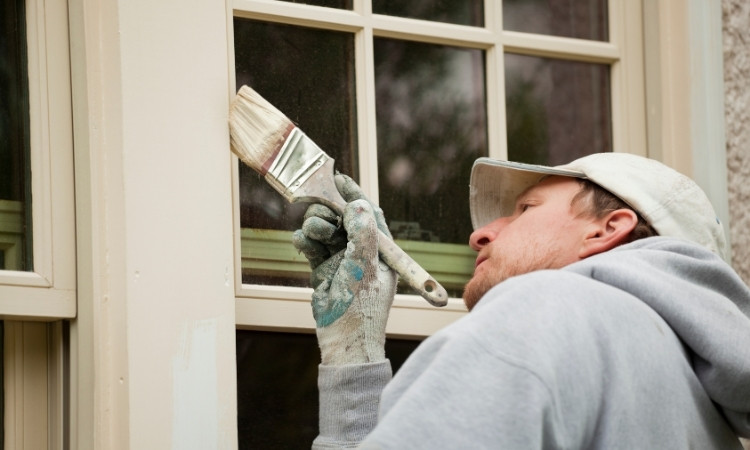5 Common Exterior Painting Problems and Their Solution
Let’s talk about something most homeowners dread but few fully understand — Exterior Painting Problems. They don’t just ruin curb appeal; they slowly eat away at your property’s protection. In a climate like Singapore’s — where the sun beats down one hour and the skies open the next — even a flawless-looking paint job can go rogue.
Whether you live in a high-rise in Woodlands or a heritage terrace in Katong, exterior painting problems in Singapore are inevitable if the wrong paint, prep, or timing is used.
And while we’ve all heard of peeling and bubbling, here are 5 less obvious issues you should know about — plus expert-backed ways to tackle them for good. Also, LS Painter Singapore offers the best residential painting, house painting, and commercial painting services in Singapore.
1. Hairline Cracks
Hairline cracks may look harmless at first, but they’re the silent culprits behind many bigger issues. These tiny fissures form as your building expands and contracts from temperature swings—a daily dance in Singapore’s tropical heat. Older buildings in estates like Tiong Bahru or Hougang are especially prone to this. Left untreated, these cracks open the door to moisture, mold, and internal wall damage.
Solution:
The best way to handle them? Don’t wait. Use a flexible crack filler, seal the surface, and repaint with an elastomeric coating that can expand and contract without breaking. Ignoring them guarantees a bigger fix down the line.

2. Chalking
You must have experienced touching a wall that leaves your fingers coated with white powder. Exterior painting problems include chalking and this insolvent binder condition stands as one of the least acknowledged dilemmas. The steady exposure to UV rays causes paint binders to break down in areas where the sun shines intensely such as Clementi and Pasir Ris. Chalking not only leaves white powder on your clothes but it is the first sign that paint will begin to fail.
Solution:
The application of a deep cleaning process combined with penetrating primer and high-grade acrylic topcoat will restore the surface to its former state. The surface requires proper preparation before applying new paint because painting without prep will simply deposit dust on top.
3. Water Staining
In Singapore, a sudden downpour is never far away. And with it comes water stains—those brownish streaks running down from aircon pipes, balcony ledges, or damaged gutters. It’s more than just ugly. Water stains are early signs of inadequate drainage or waterproofing solutions, and if left unattended, the wall will continue to soak up moisture.
Solution:
This isn’t a one-coat fix. You’ll need to correct the source of the moisture, clean the stain (usually with a mild bleach solution), and repaint with water-repellent exterior paint. If you’re seeing this on new paint within a year, chances are something was missed during the prep.
4. Algae Growth
Algae might start as a green tint near the base of your wall, but give it time, and it becomes a full-blown invasion. Shaded areas near gardens or behind buildings in damp zones like Bukit Timah or Sembawang are common hotspots. Algae love moisture and poor sunlight, and regular paint just won’t keep it out.
Solution:
To properly treat and prevent it, you need to clean the surface with an anti-algae solution and switch to a fungicidal primer and algae-resistant paint. Many homeowners try to just “paint over the green,” only to find it back in two weeks. Don’t make that mistake.

5. Paint Wrinkling
Wrinkling looks like your paint had a meltdown—and that’s pretty much what happened. This odd, rubbery texture forms when the paint dries too quickly on the surface while the lower layers stay soft. In Singapore, this usually happens when people paint in the full afternoon sun or apply the paint way too thickly. It’s tempting to rush during a short dry spell, but this is one of the easiest ways to ruin a wall.
Solution:
Fixing it involves scraping off the wrinkled layer, allowing the surface to breathe, and repainting at the right time of day with controlled application. Choosing the right day—and even the right hour—matters more than you think.
Final Thoughts
These may not be the most obvious issues, but they are some of the most damaging if left untreated. In our climate, exterior painting problems in Singapore are a given. But that doesn’t mean they’re unfixable. With good prep work, the right paints, and weather-smart timing, you can extend the life of your paint job—and your property.
Whether you’re dealing with algae, wrinkling, or chalking, remember that the solution of exterior painting problems lies in understanding what caused them. And if in doubt, consult a professional who knows how to work with the weather instead of against it.
Singapore doesn’t make it easy, but a beautiful, lasting exterior is still possible if you know how to fix exterior painting problems before they grow into full-blown disasters. Your walls will thank you.


